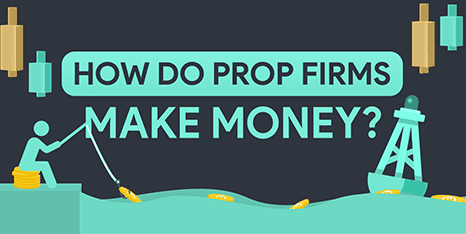How Do Prop Firms Make Money?
Prop trading firms make money by sharing profits from funded trades and earning fees from evaluations and educational services. With strict risk management rules and trading support in place, they create a setup where both the prop firm and traders can benefit from successful trading.





 Prop firms are financial institutions that trade different financial instruments using their own capital, rather than managing or trading client funds.
Prop firms are financial institutions that trade different financial instruments using their own capital, rather than managing or trading client funds.




